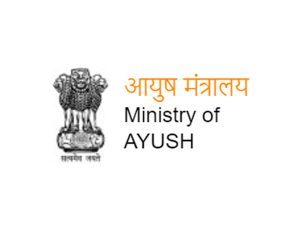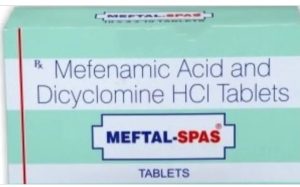Acne ‘a problem’ of growing age
24 min read
Introduction:
Acne is a chronic inflammatory disease involving the pilosebaceous apparatus. It is one of the cosmetic disorders all over the world. It is characterised by the formation of papules, pustules and is often accompanied by oily seborrhoea. The sites of predilection are face, shoulder, chest and back. Acne affects the parts where sebaceous glands are large and numerous. It develops at puberty when the sebaceous glands are most active. In the preadolescent period, seborrhoea oleosa and some comedones appear, frequently as fore runners of the disease, because teen agers are most susceptible to acne, the condition is called acne juveniles. In the late twenties it gradually decreases and is occasionally seen after the age of thirty. It occurs in both girls and boys in the later, in some what sever form.
ETYMOLOGY OF ACNE :
Two different etymological origins are commonly given for this term. Hippocrates used the word in the sense of lint or anything that comes off the surface.
The term in this sense appears to have fallen into disuse and in Hooper’s edition of Quincys medical Dictionary published 1802, acne appears in a list of obsolete words meaning of chaff, scum or lint.
The second derivation commonly given considers acne to be a corruption or copyists error for Acne meaning highest point., this supposed to refer to youth or the prime of life as acne is a condition affecting those in the most vigorous stage of life. In another dictionary by Sathyaprakash and Bal. Bhadraparasad the acne is said to be derived from the Greek word ‘AKESIS’ which means without itch.
AETIOLOGY OF ACNE :
This disorder is most frequent between 13-30 years of age. It’s prevalence is similar in both sexes but the peak age of severity in females is 16-17 years and in male 17-19 years. Acne clears by the age of 23-25 years in 90% of patients but some 5% of women and 1% of men still need treatment in their thirties or even forties.
Again the aetiological factors can be subdivided into
(1) Primary causes
(2) Predisposing causes
(1) PRIMARY CAUSES :
The causes which directly effect the skin or the sebaceous glands and produce pimples are put under this category. Harmonal inbalances bacillary interference and allergic manifestation are the chief factors of the primary causes.
(A) HORMONES :
(B) BACILLARY INTERFERENCE –
(C) ALLERGIC MANIFESTATION –
(2) PREDESPOSING CAUSES –
There are some factors not producing the Acne, but preparing a flora to the acne production. The factors create some conditions in the body, favouring to the acne occurrence. These factors are climate, diet, constipation, occupation use of cosmetics, mental stress etc.
(a) Climate –
(b) Diet –
(c) Constipation –
(d) Use of cosmetics –
(e) Mental stress –
(f) Occupation –
(h) Sweating –
(i) Ultraviolet radiation –
PATHOGENESIS OF ACNE
The main cause of the disease is the over production of sebum. Androgen stimulates the activity of sebaceous glands resulting in excessive production of Sebum.
The sebum produced is so concentrated or profuse that it does not entirely gain access to the surface. It gradually accumulates in the sebaceous glands together with increased no. of Stratum Corneum cells from the exfoliated follicular epithelium, so that cheesy plugs eventually form which block the openings of sebaceous glands.
The primary lesion of the acne is the comedone, it signifies a plug composed or dried sebum, epithelial cells and keratinous scales, it fills the pilo sebaceous canal on the surface of skin it appears as a slightly elevated white dot called white head.
With the passage of time the sulphur constituent of sebum soon gets converted into sulphide turning the white head into black dot called a black head. On microscopical examination the excretory portion of the sebaceous follicle is found occluded by thickened sebum, the gland itself is dilated and filled with fat granules, cellular detritus and pus cells. The adjacent cutis is congested and more or less infiltrated with round cells. With a comedone extractor the entire comedone can be readily squeezed out as a yellowish cheesy, looking, worm like mass, followed by milky or purulent posty or more fluid contents.
Some comedones may persist and remain unchanged, but often an inflammatory reaction occur.
The blockage of gland and stasis of the contents enables the resident saprophytic organism to break down the lipids in the sebum and produce free fatty acids which leak into the dermis, causing an inflammatory reaction. The first stage is erythema which surrounds or engulf the comedone and a papule develops. The comedone is transformed into a moderately firm lentil to pea sized of red colour. Most of these, papules gradually involutes leaving no trace; while other suppurates to form pustules, resulting from the action of secondary invading micro-organisms chiefly staphylococci. This suppuration may be superficial or deep seated. The deep seated pustules takes time to involute.
A great degree of reaction may not point to the surface but may remain damned up in corium to form a cyst. These cysts, however tend to persist, discharging from time to time a thin purulent fluid.
CLINICAL TYPES OF ACNE –
There are 6 types of acne found commonly. These types are as follows
(1) Acne punctata
(2) Acne papulosa
(3) Acne Pustulosa
(4) Acne indurata
(5) Acne cystica
(6) Acne keloidal.
TREATMENT OF ACNE :
The treatment of acne is not still perfect though many medicines are there to treat the condition. The course of acne is chronic with frequent remissions and exacerbation. The disease has a tendency to flare up in the premenstrual period. Acne tends to subside in the early 20, but may persist indefinitely.
The treatment is aimed at tiding the patient, over the acne years with as few lesions as possible to diminish the psychological trauma of a spotty face and the appearance of scarring which if severe may produce disfigurement for life.
The detailed study of this disease requires that the treatment should be manifold and geared towards the following aims.
(a) Appropriate cleansing.
(b) Discouraging and dislodging the black heads.
(c) Reducing the oilyness of the skin.
(d) Curing the existing eruptions.
(e) Preventing further infections.
(f) Providing a protection against environmental pollution.
(g) Providing a suitable medicated base to moisturize the skin and conceal the condition.
GENERAL TREATMENT FOR ACNE :
(1) Diet –
(II) Hygiene of the face :
(III) Vaccine Therapy–
INTERNAL TREATMENT :
(I) Vitamin A Therapy (Retinoic acid) –
(II) Hormone Therapy –
(III) Antimicrobial Therapy –
(a) Systemic Antibiotics –
(b) Topical Antibiotics –
(iv) Cryo therapy –
(v) Acne Surgery –
AYURVEDIC VIEW – According to Ayurveda, we can compare Yuvan pidika with Acne. So treatment of Yuvan pidika is as follows –
Chandra kala rs. – 125 mg
Prawal pisti – 125 mg
Giloya satva – 500 mg
Kamdudha rs. – 125 mg
1*2 with Chandanasava 2 tsf
Kaishore guggulu – 250 mg
Gandhaka rs. – 125 mg
1*2 with sarivadyarista 4 tsf
AYURVEDIC PATENT DRUGS –
ACLEAR Anti Acne Topical, ACLEAR Capsule, ACNO, ACNOVIN Capsule, AKPRE Cream, CLARINA Cream, GLODERM Syrup, GLODERM Tablets, GLORY Herbal Face Pack, HEMOCLEEN, MARVIN, PAROLEP Powder, PURIM Tablet, RAKTAMRIT, RAKTSHODHAK Syrup, ROPAN, SARIVA KALPA, SURAKIA, TALEKT Capsule / Syrup,
Author:
*Content of this article is purely view of author .Treatment published is not for self medication.






